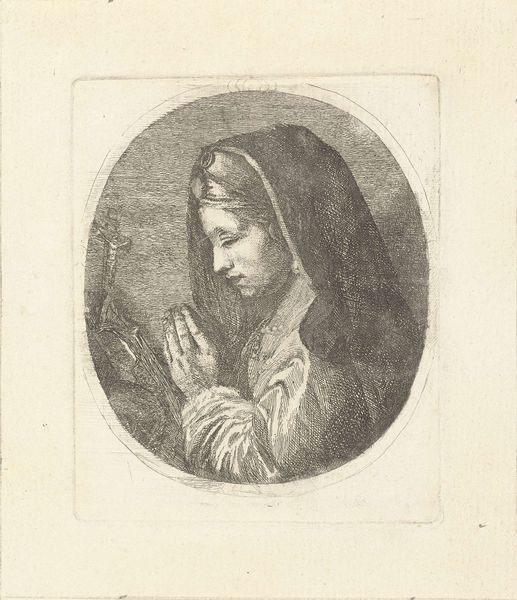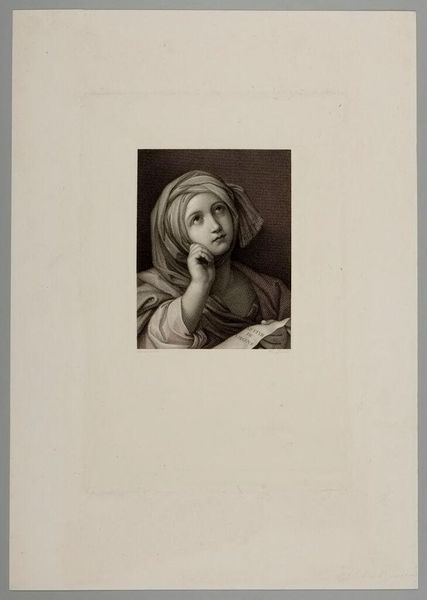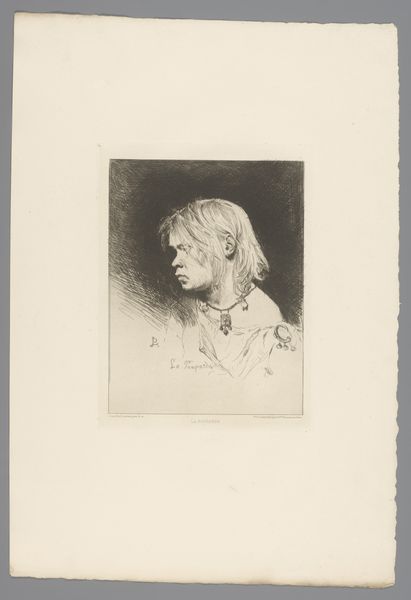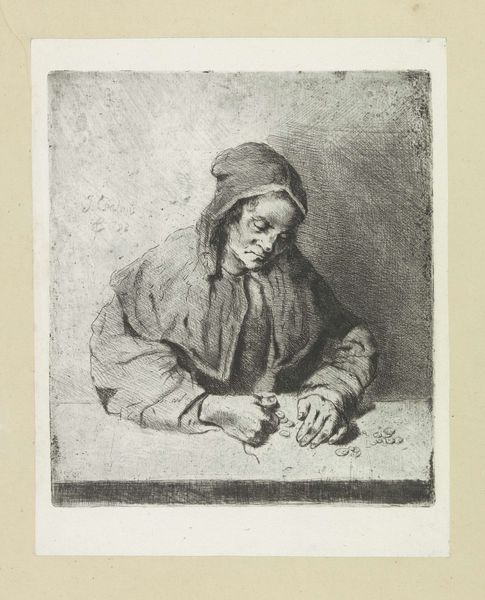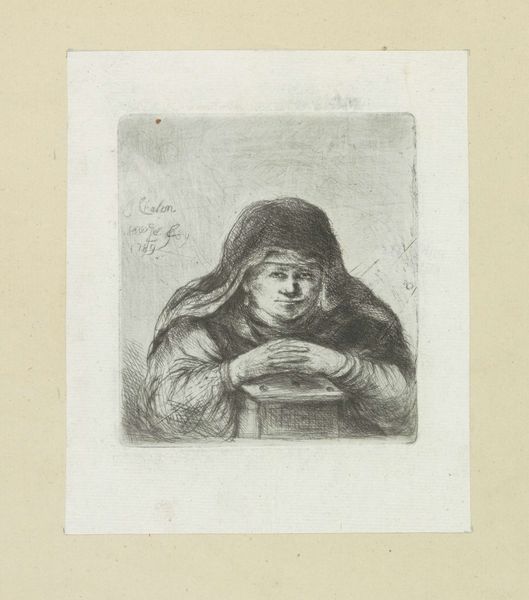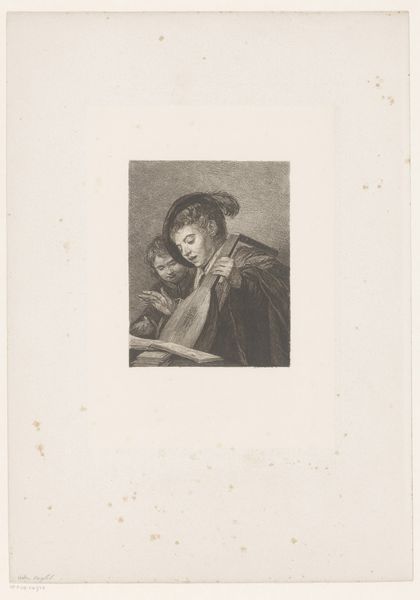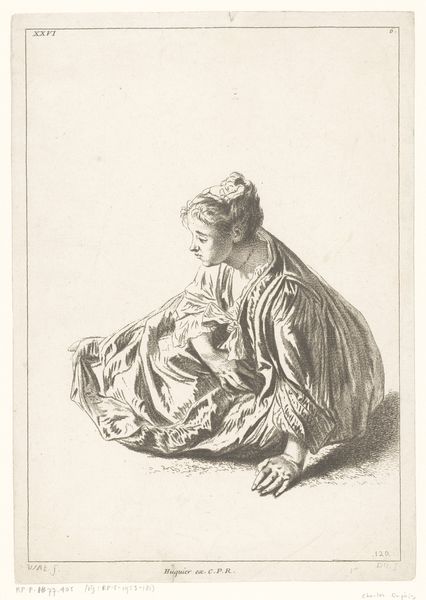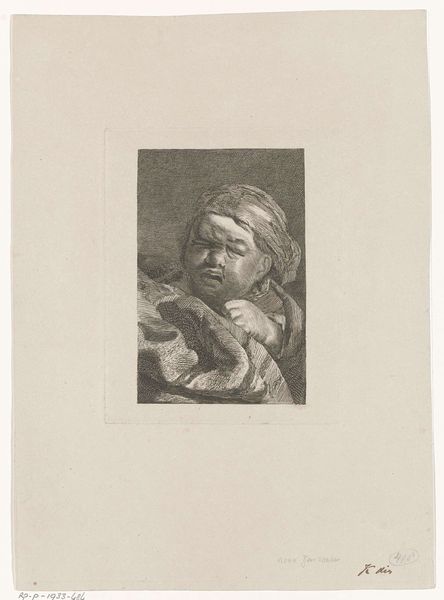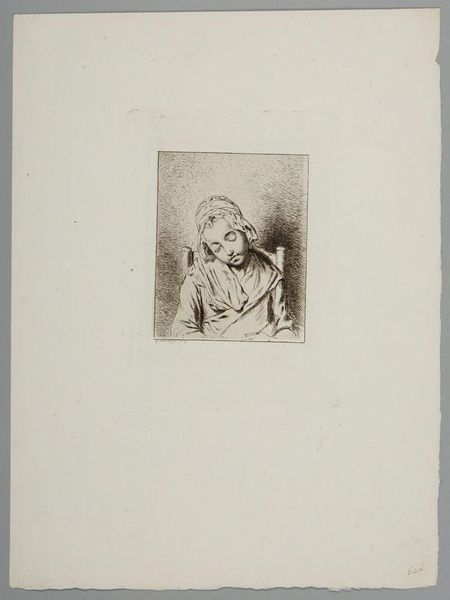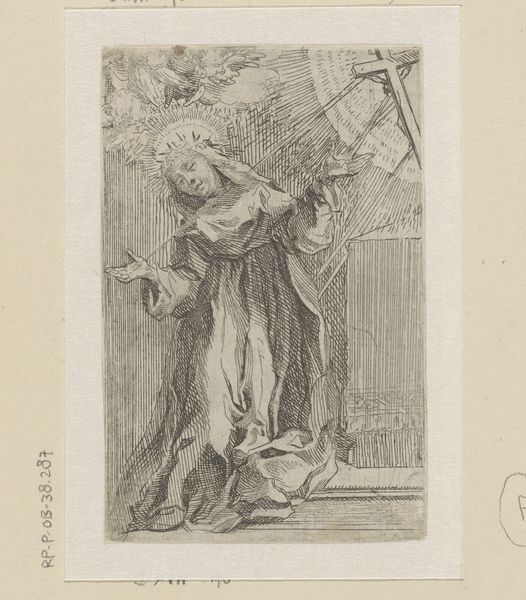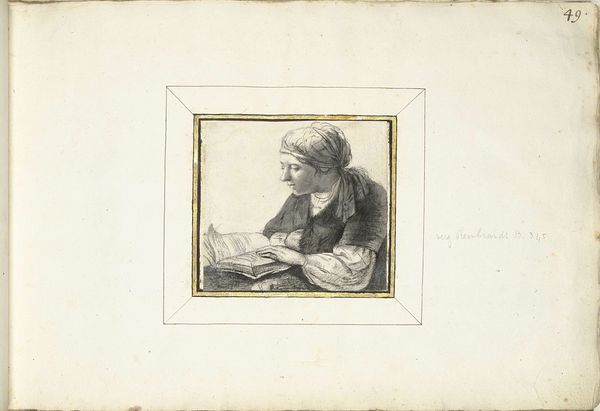
Dimensions: height 125 mm, width 100 mm
Copyright: Rijks Museum: Open Domain
Editor: This etching, "Meisje met hoofddoek," created sometime between 1735 and 1805 by Jean-Baptiste Greuze, has a very intimate feel to it. The texture looks almost like fabric itself. How do you interpret the techniques and materials here? Curator: It’s important to see how Greuze's etching transforms a seemingly simple piece of paper into something deeply evocative. The lines aren't just marks; they're evidence of labor, of a physical process used to translate an image onto a plate and then onto the page. Notice how the quality of the paper itself impacts our perception, its texture, its absorbency playing a role in the final print. Editor: So, you're focusing less on the subject and more on how it was actually made? Curator: Precisely. The very act of etching becomes the subject. The way the plate wears, the ink sits, all of that becomes part of the meaning. We must think about how etchings were disseminated during that period and for whom. These prints allowed access to imagery beyond the elite painting clientele. They offered a visual commodity consumed within specific economic and social strata. What does the relative accessibility of etchings tell us about the art market in Greuze's time? Editor: I hadn't considered it as a commodity like that, available to different social classes. It changes my perspective. Curator: Thinking about art in terms of production, materiality, and consumption can often challenge the traditional narrative and hierarchy in art history. Editor: I definitely have a better understanding of how to consider not just what's depicted but the how and why of its creation, and who got to consume it. Thank you! Curator: It's been my pleasure!
Comments
No comments
Be the first to comment and join the conversation on the ultimate creative platform.
